Auctioning is a type of business that sells a product or service to the highest bidder. The auctioneer is the person who oversees the bidding process, including calling out a current bid to their audience, announcing when there are no more bids available, and repeating all of this in order until one bidder has reached their maximum amount.
Once a bidder has won, the auction will send an invoice to the buyer. For that reason, you will need to have an auction invoice in place to make sure that the auctioning process goes smoothly. There are tons of free auction invoice templates online. But if you want to make your invoice unique and professional, you’ll need an invoicing platform like ReliaBIlls (more on that later).
In this article, we will discuss everything you need to know about creating an auction invoice. That way, you will know exactly what to include on your invoice and how to make the process as smooth as possible for both you and the bidder. Let’s get started!
Table of Contents
ToggleWhat is an Auction Invoice?
An auction invoice is a document used to request payment for goods or services that have been won at auction. This type of invoice should include all of the pertinent information about the transaction, such as the date, the items sold, and the amount paid.
You can create an auction invoice in a variety of formats. But it is typically a simple document that includes the necessary information about the sale. Most auctioneers will use an invoice template to create their invoices, found online or in software programs like ReliaBills.
How do Auctions Work?
As mentioned earlier, an auction is a type of business that sells a product or service to the highest bidder. To participate in an auction, you will need to place a bid on the item you are interested in.
The auctioneer is responsible for overseeing the bidding process and ensuring that all of the rules are followed. They will also be responsible for ensuring that the bids are accurate and fair.
The auctioneer is responsible for announcing when no more bids are available, repeating this in order until one bidder has reached their maximum amount. Once a bid has been placed on an item, it cannot be changed or retracted unless another person makes a higher offer before anyone else can do so.
The Process of Auctioning
For standard in-person auctions, the following phases typically take place. Depending on the item or service being sold, some of these stages may not occur due to impracticality:
- Viewing: before the bidding takes place, aspiring bidders can view and inspect the item to form an idea of what they’re willing to spend or what bidding strategy they will use.
- Bidder Registration: To join the bidding, bidders must register first. This is a requirement for legal purposes and to prevent fraud during the auction process.
- Bidding: after registration, all bidders will be asked to take their seats in front of the person conducting the bidding or seat in an online video conference call for online auctions. The bidder who wins at this stage is the one who has agreed to the amount that is the highest at the time of declaration by the auctioneer.
Salary Rate of People Doing Auctioning
According to PayScale, an auctioneer typically makes around $64,000 per year. This salary can vary depending on several factors, such as years of experience and the company’s size that employs them.
Auctioneers typically work full-time hours, but they may also be required to work overtime or weekends if an auction occurs. They may also need to travel to different locations to conduct auctions. According to Salary.com, auctioneers earn an average of $26 per hour.
Difference Between a Standard Auction and a Silent Auction
There are two main types of auctions that you can participate in standard or silent. Standard auctions occur on a stage with an auctioneer speaking to the bidders, while silent auctions occur online through websites like eBay or Craigslist.
- Standard Auctions: These are the most common type of auction, and they take place at an established location, such as a warehouse or an auction house. The bidding is open to the public, and anyone can participate.
- Silent Auctions: Silent auctions are conducted online and usually involve items sold remotely. You will need to be registered with the website hosting the auction and have a valid credit card to bid on an item.
How Does a Silent Auction Work?
In a silent auction, you can participate from anywhere in the world. The process is simple: all bidders submit their bids for an item and then wait until someone else has placed a higher bid than theirs or until the end of bidding time. If this happens, they win! You do not have to be present at the auction to bid on an item. Although it would be best if you were able to make sure that your bids are accurate before submitting them.
How to Be a Good Bidder
To be a successful bidder, you will need to know the following:
- What the item is that you are bidding on
- The starting price of the auction
- How much you are willing to spend on the item
- When the auction is set to end
It is also essential to know the bidding process and how it works. This will help you avoid any confusion or mishaps during the auction. Familiarizing yourself with common auction terms will also give you an advantage over other bidders.
Common Auction Terms
- Bid: this is the amount a bidder is willing to pay for an item.
- Proxy bid: this is when someone bids on behalf of the actual buyer if they cannot be present at the auction.
- Reserve price: this is the minimum amount that a seller will accept for their item, and it must be met before any bids can be placed.
What to Include on an Auction Invoice?
An auction invoice should include all of the pertinent information about the sale, such as the date, the items sold, and the amount paid. It is typically a simple document that includes the necessary information about the transaction.
Data needed when creating auction invoices include the following:
- Item(s) sold: This is a list of the purchased items with their corresponding prices.
- Buyer’s name and address: This includes the buyer’s full legal name, as well as their mailing address, so they can receive an invoice in the mail if necessary.
- Payment method: If you accept cash payments, it is essential to include this. If you are not accepting cash payments, then leave out this information.
- Payment due date: You should specify how soon after the auction ends that payment must be received by writing down a specific date or time period (such as one week). This will help prevent any confusion on when payments should arrive.
- Pickup instructions: If you are selling items from your own home and sending them to the buyer, include this information, so they know what address to pay for their purchases.
Most auctioneers will use an auction invoice template that they download from a website and then fill in with their specific information. This will ensure that all necessary details are included in each document.
Some companies may also use software like Excel to create invoices for their clients. Although this is not always as common practice as using an online program or downloading a template.
Why Use ReliaBills
Invoicing and billing are two essential components of every successful business. Without them, you will not be able to get paid for your services or products in a timely manner.
To make sure that you are always on top of these important tasks, use ReliaBills invoice software! Our invoicing software allows users to create professional-looking invoices within minutes and send them out via email (or print if necessary).
You can also keep track of all your clients’ payment statuses from one convenient dashboard. And you will never have to worry about missing any payments again!
We know how important it is to get paid on time, and our invoicing platform will help ensure that happens every single time.
ReliaBills offers several features that make it easy to manage your business and get paid faster. Our invoicing software is designed with small businesses in mind, but we also offer enterprise solutions for larger companies too!
How to Create a New Auction Invoice Using ReliaBills
Creating an invoice using ReliaBills involves the following steps:
Step 1: Login to ReliaBills
- Access your ReliaBills Account using your login credentials. If you don’t have an account, sign up here.
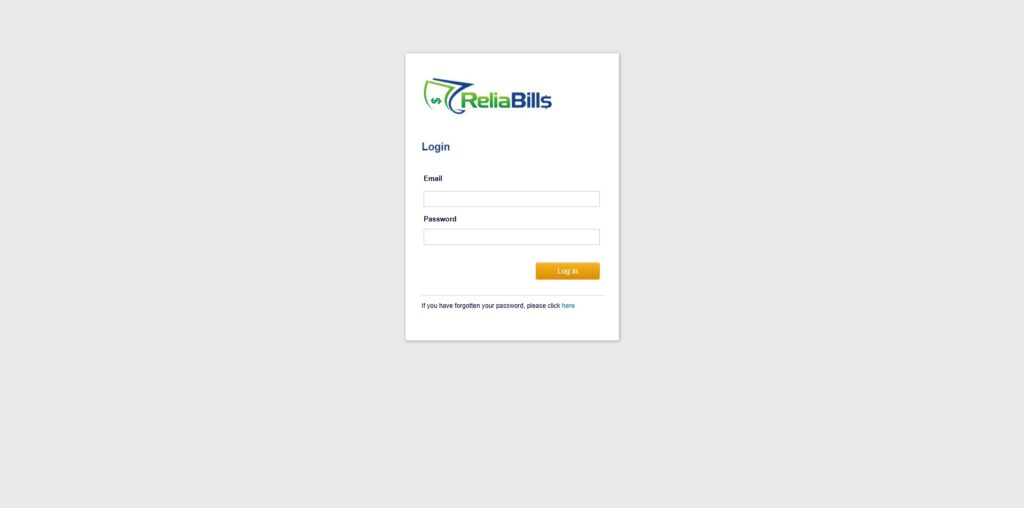
Step 2: Click on Invoices
- Navigate to the Invoices Dropdown and click on Invoices.
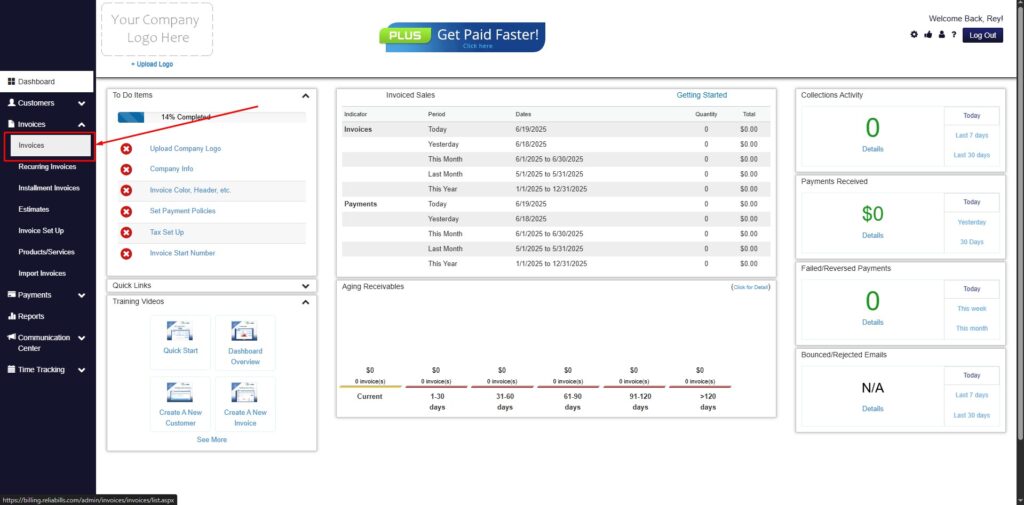
Step 3: Click ‘Create New Invoice’
- Click ‘Create New Invoice’ to proceed.
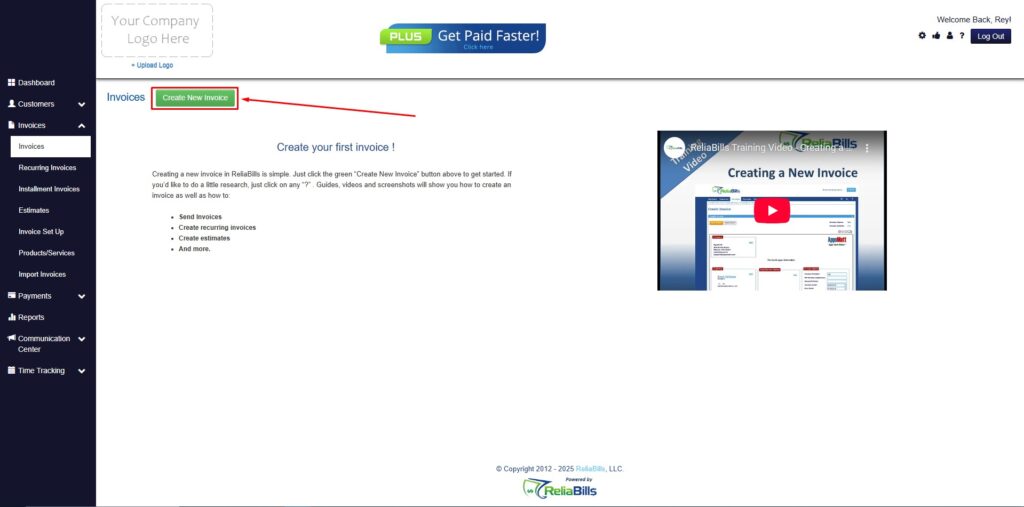
Step 4: Go to the ‘Customers Tab’
- If you have already created a customer, search for them in the Customers tab and make sure their status is “Active”.
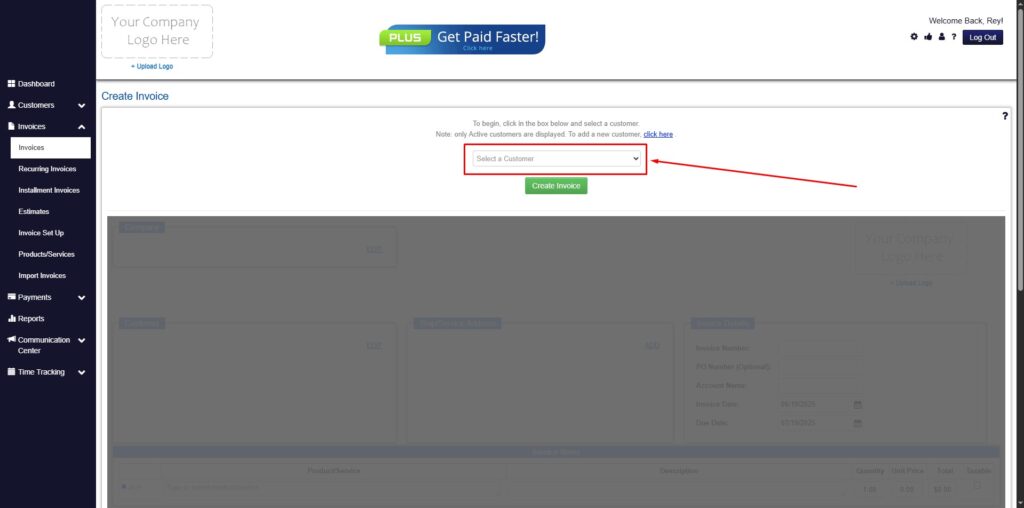
Step 5: Create Customer
- If you haven’t created any customers yet, click the ‘Click here’ to create a new customer.
- Provide the First Name, Last Name, and Email to proceed.
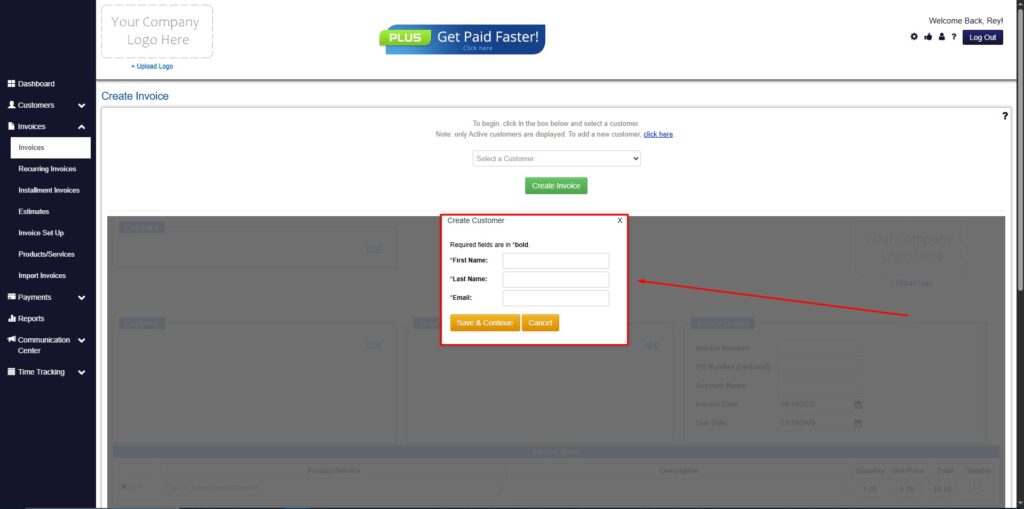
Step 6: Fill in the Create Invoice Form
- Fill in all the necessary fields.
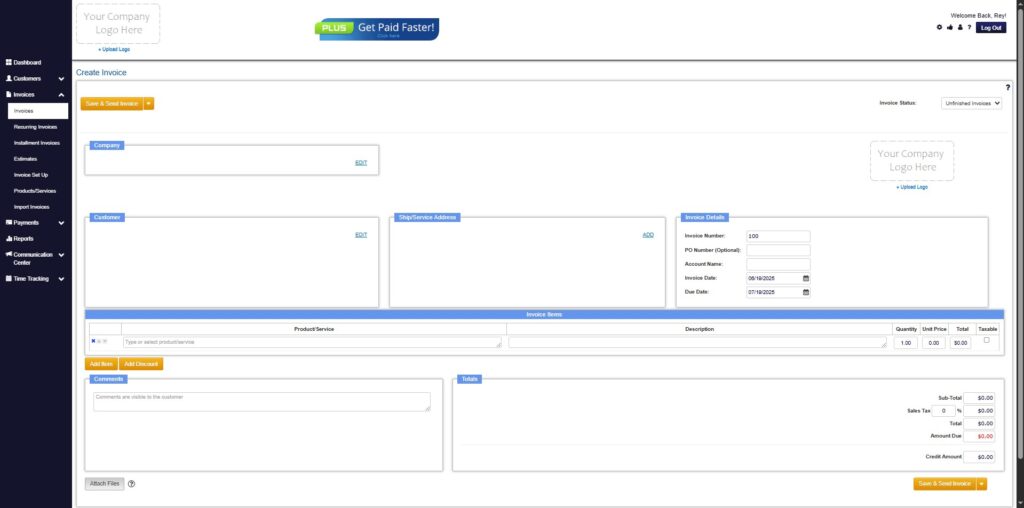
Step 7: Save Invoice
- After filling out the form, click “Save & Send Invoice” to continue.
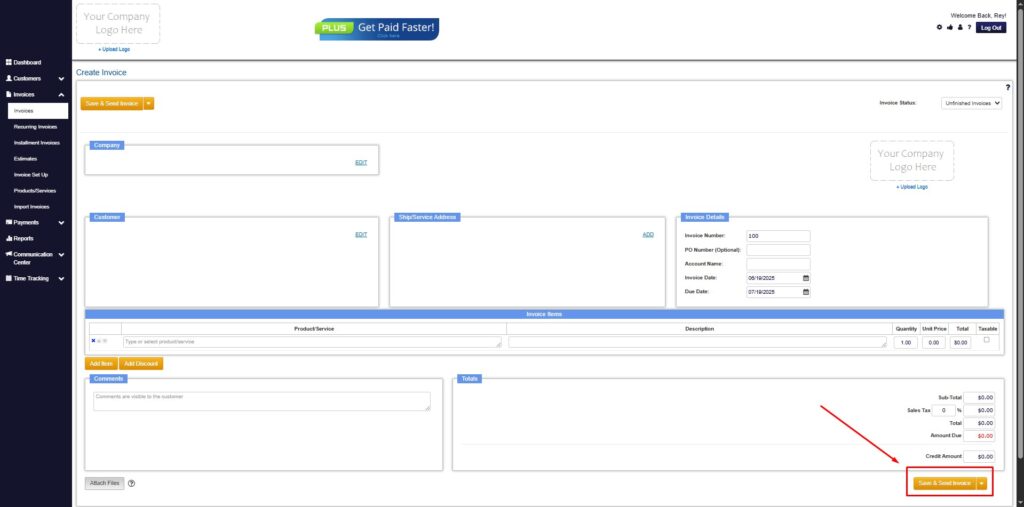
Step 8: Invoice Created
- Your Invoice has been created.
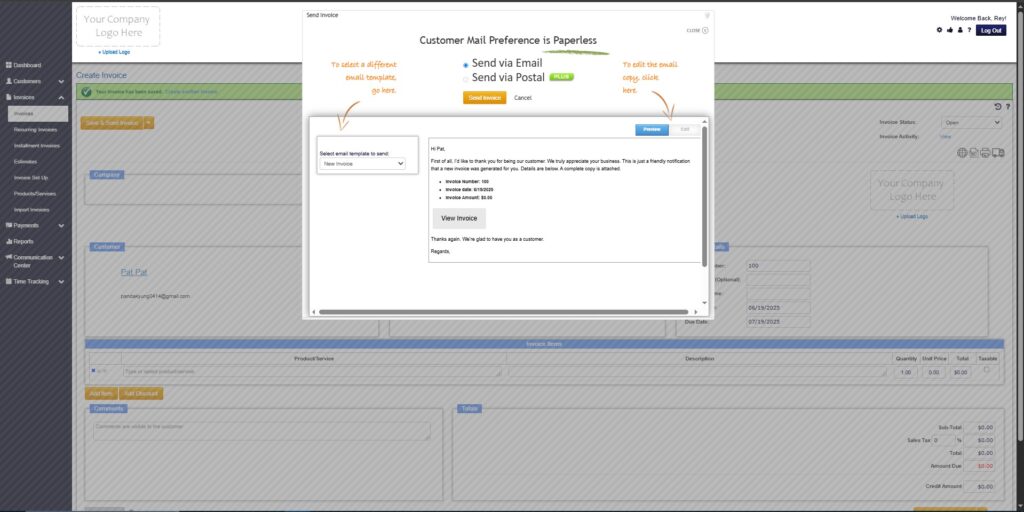
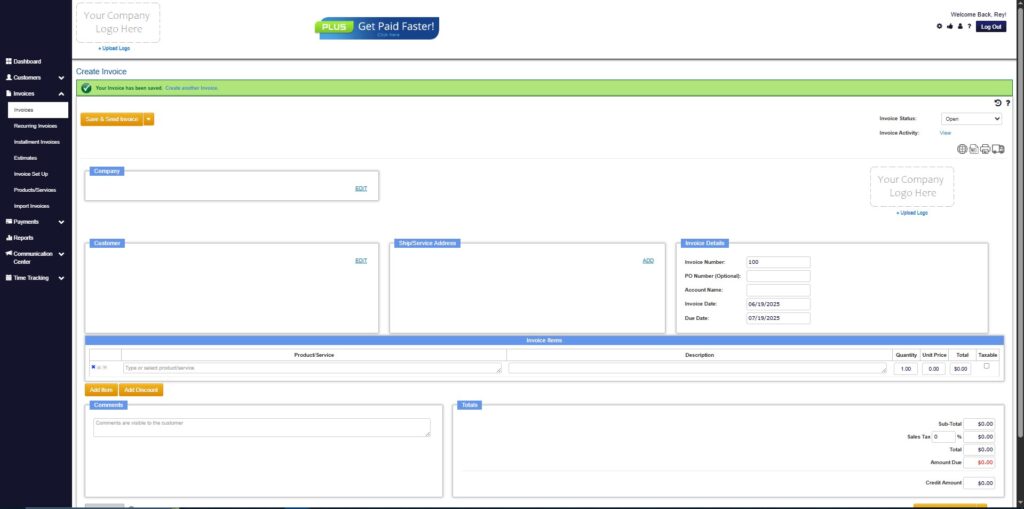
Wrapping Up
As an auctioneer, it’s essential to make sure that your invoicing process is up to par with the industry experts. Hopefully, this guide will help you get your invoicing up and running.


